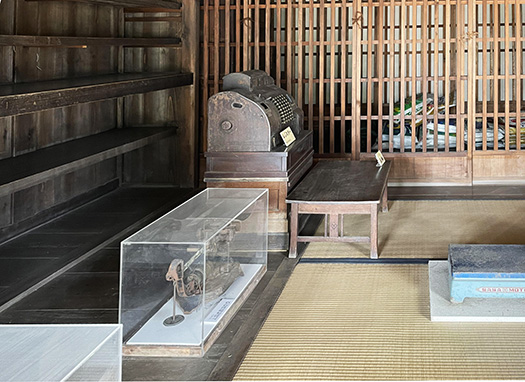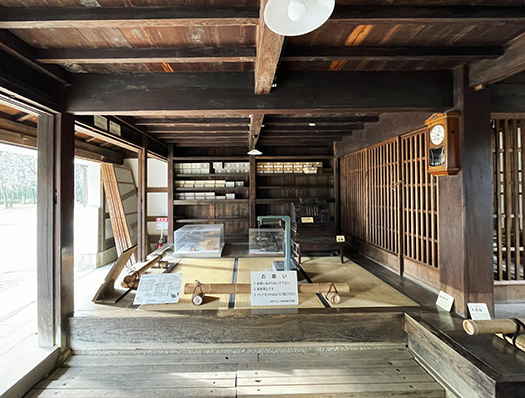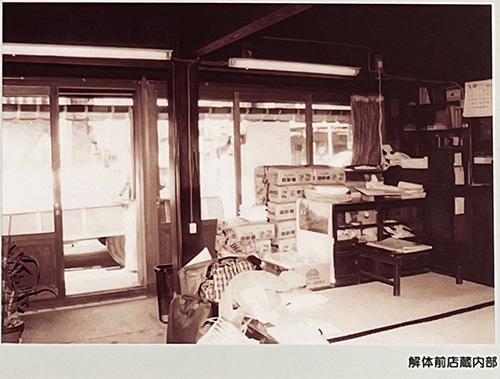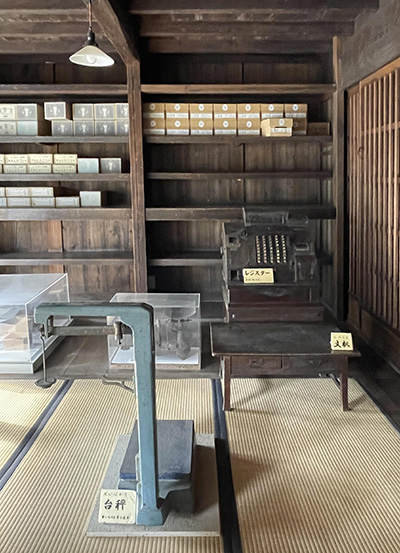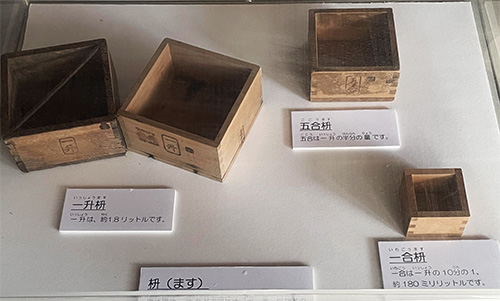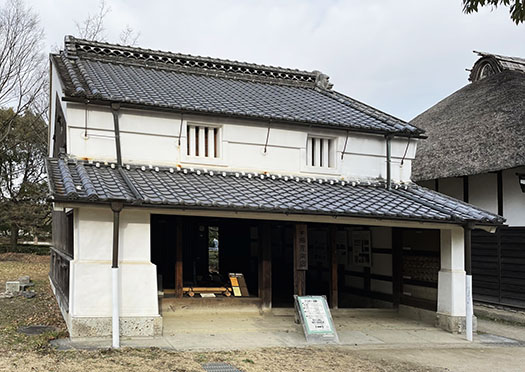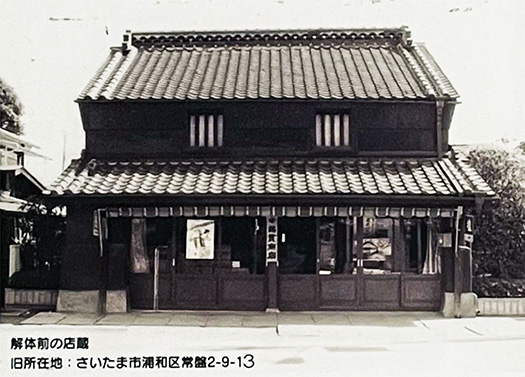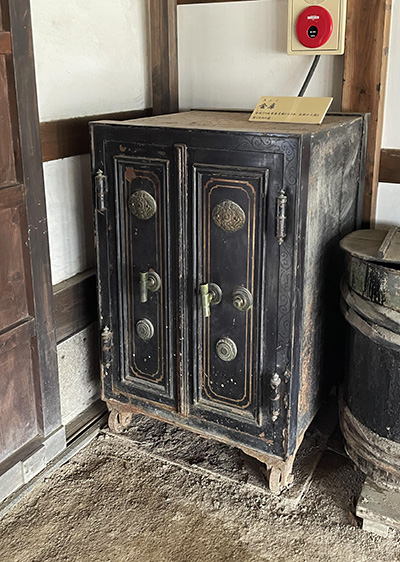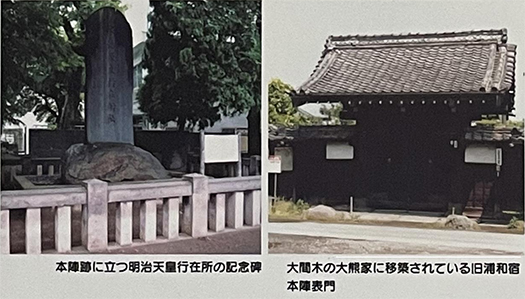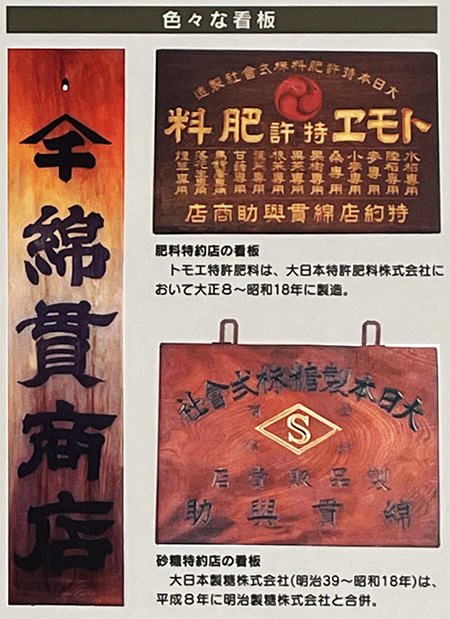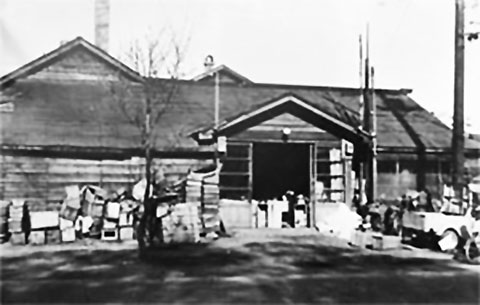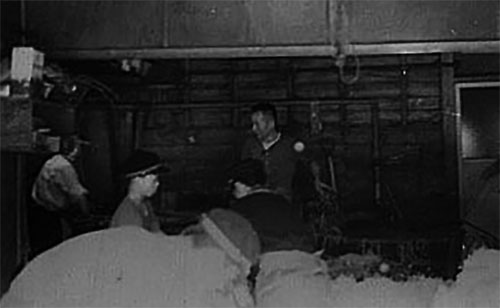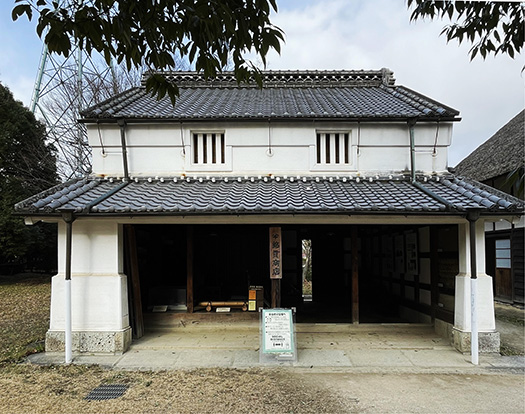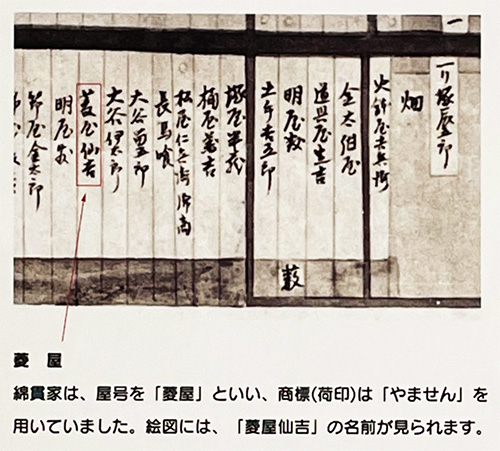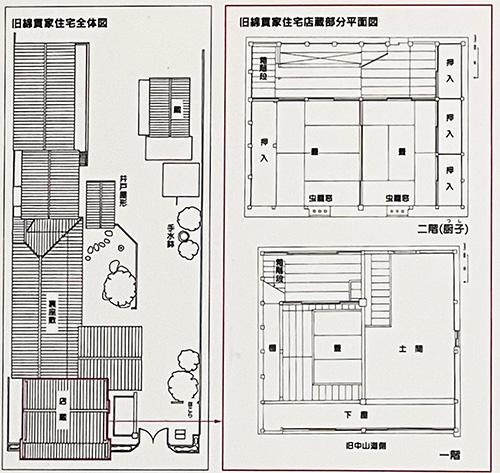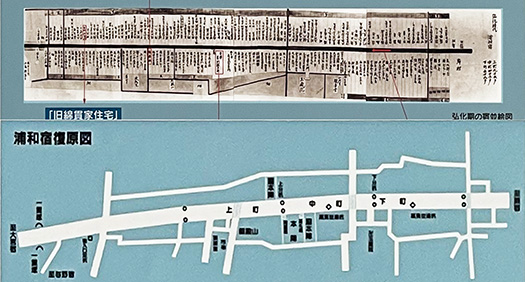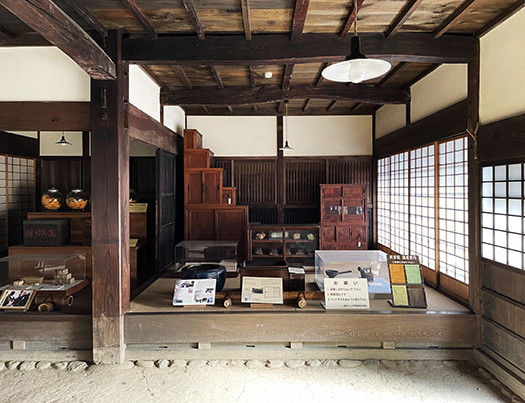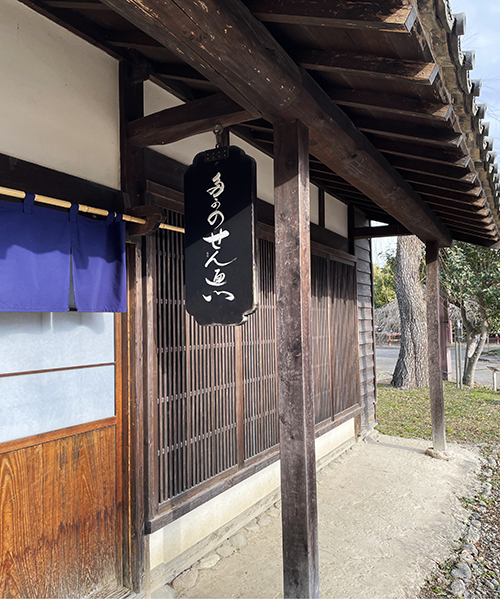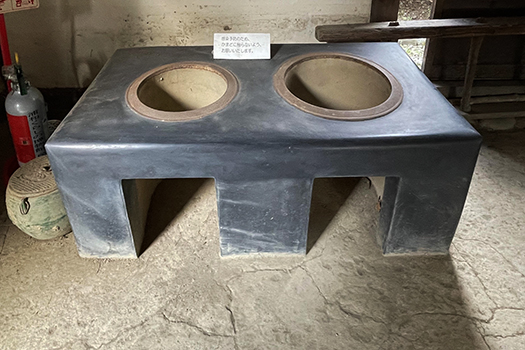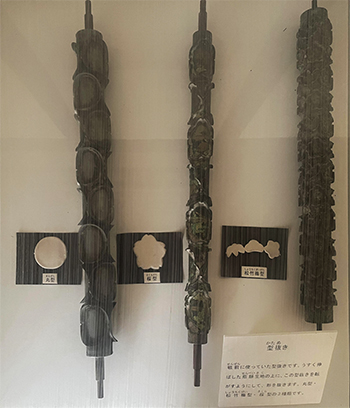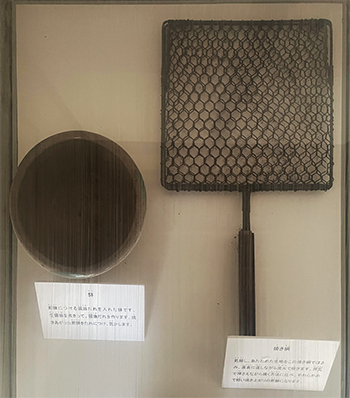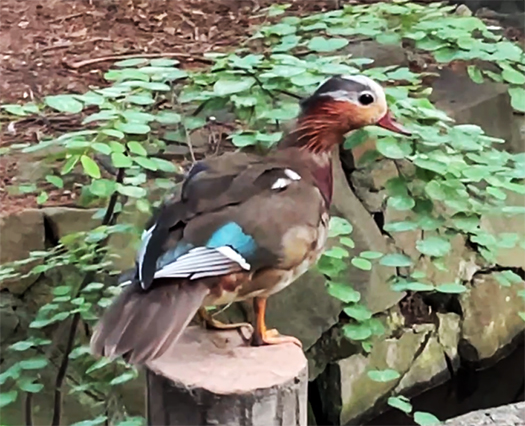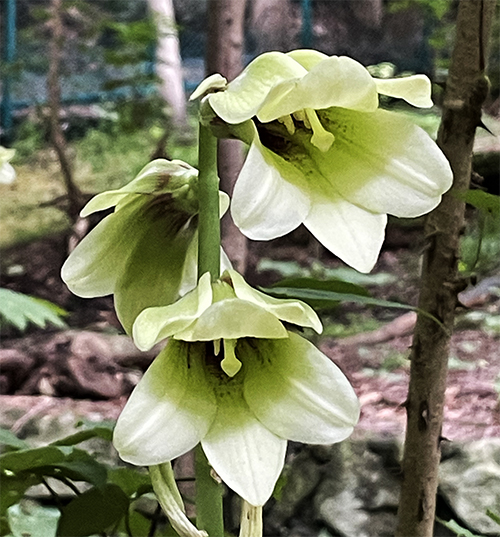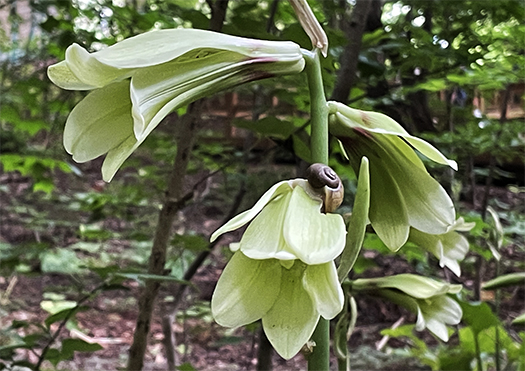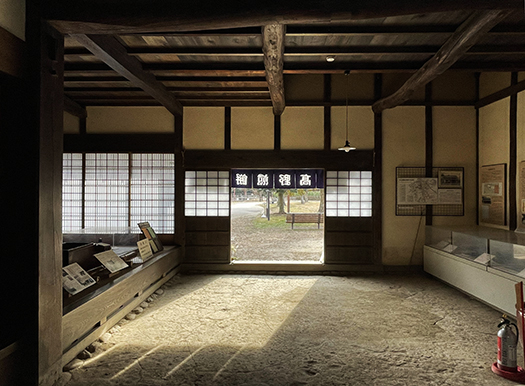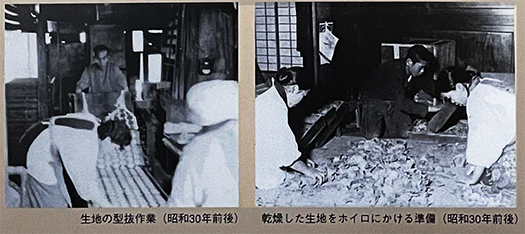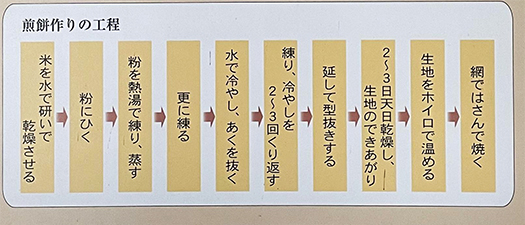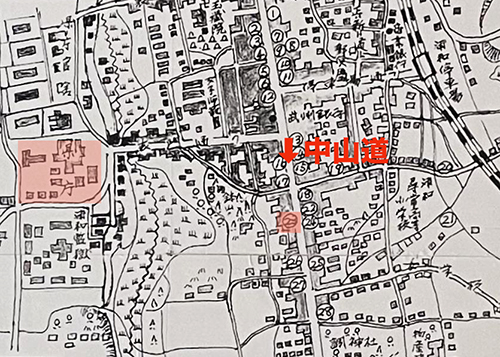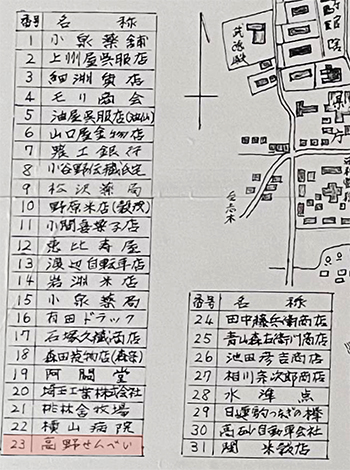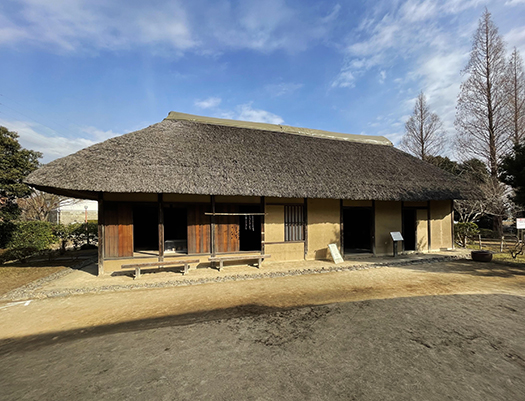
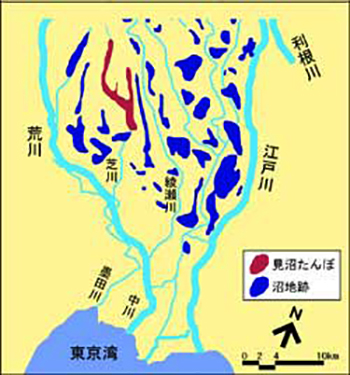

商家2軒をひもといてみた浦和の「民家園」保存建物の続篇。今回は地域の開発農家住宅篇です。関東を家康が治めるに際してかれは大規模な自然改造計画を打ち出している。上の外観写真の下は今回の住宅に関連する「見沼たんぼ」を赤く図示した広域図、そして巨大自然改造計画「利根川東遷」の図。
関東平野というのは日本最大の平野部でありながら、縄文海進の名残が強く残っていて整合的な河川構成ではなく、最大の暴れ川・利根川が江戸湾(東京湾)に注いでいて中心地域・江戸ですら安定した地面の確保が難しい広大な地域。巨大な湿潤平野地域が生む「坂東太郎」という巨大雲の造形が作られる。
そういう地域だけれど、武家権力にとっては鎌倉期以来の「本願」の地。ヤマト王権が比較的に安定した地盤面と気候風土の「畿内」地域を基盤として成立したのにはそういう背景事情があったと思うし、東国・関東をどう安定支配するかが日本の権力の歴史的「課題」でもあったのだろう。
そういう地域の支配権を秀吉は家康に与えた。基本的には関東に「封じ込めた」のだろう。安定した領土・東海5カ国を取り上げて関八州と交換させた。「これでオレの権力はひと安心だ」と思ったに違いない。そういう不利な領土移転に対して地道な領土経営を家康は坦々と進める。
家康の天下取りは、かれの「治政・治山治水能力」に依るところが大きいのではないかと思っています。なんといってもその最たるものは関東での利根川の東遷計画の遂行でしょう。
いまは「どうする家康」の度肝を抜くファンタジーぶりが話題になっていますが、かれの能力は三河・遠江・駿河の3カ国支配から信長の死を経てあっという間に甲斐・信州を併合した統治能力と、その後の秀吉による関東移封を見事に逆手にとって、関東に平和と政治体制の安定をもたらした手腕に依るところが大きい。武田氏や北条氏の遺臣たちがあっという間に家康に従ったことが、すなわち人心と地域の安定をもたらし、それがかれの天下制覇に繋がったのだと思うのです。
ぜひそのような非ドラマチックなテーマをたっぷりと見せ場にすることを期待したい(笑)。でもまぁ、そういうのはムリでしょうね。たぶん信長や秀吉のような重商主義変革路線に対して、農本主義的な支配体制路線が対置されるのでしょう、常識的に。
で、戦国期に盛り上がった「築城土木技術」が、家康によってこの利根川東遷計画という驚嘆すべき平和的な河川土木工事・建築工事に昇華させられたことが、かれ家康の隠れた「革命性」だったように思われるのです。さてどうでしょうか?
こういう自然大改造計画というのは日本史上でも稀有。鎌倉武士以来、辛苦を重ねてきた関東支配が実質的に完成した巨大事業。いなほの国・日本の政治権力の正統性は、やはり自然をしっかりコントロールする能力に淵源を持つのだと思う。日本全体にとって次の民族的領土経営課題は北海道に受け継がれる。
紹介する「旧・蓮見家住宅」は、この家康の大土木事業に関連した自然改造の結果、新規造成された田園の新興地主農家住宅という性格が強い。前段の地域開発側面の把握に沿って明日以降に続けます。
English version⬇
Jomon sea advance and Ieyasu’s “Great Kanto Reform” Development Farmers in Urawa-1
Public works projects to remodel nature from the viewpoint of “management” rather than “domination”. The basis of this project, the Tone River eastward shift project, is a gigantic flood control project. The “Tosateru Daigongen,” the sovereign of God. The “Tosetsu Daigongen” character, the divine sovereign.
A continuation of the “Minka-en” preserved buildings in Urawa, where we looked into two merchant houses. This time, we will look at the development of farmhouses in the area. When Ieyasu Ieyasu ruled the Kanto region, he launched a large-scale natural remodeling project. Below the exterior photo above is a red map of the “Minuma-tambo” area related to the houses in this issue, and a map of the “Tone River Eastward Transition,” a massive natural remodeling project.
The Kanto Plain is the largest plain in Japan, but it is a vast area where the remnants of the Jomon sea advance remain strong and the river configuration is not consistent, and the largest river, the Tone River, flows into the Edo Bay (Tokyo Bay), making it difficult to secure stable ground even in the central area, Edo. The huge humid plain area creates a huge cloud formation called “Bando Taro.
Although it is such an area, it has been the land of “Hongan” for the samurai power since the Kamakura period (1185-1333). I believe that this was the background for the establishment of the Yamato kingdom based on the relatively stable ground and climate of the Kinai region, and that the stable control of the eastern provinces and the Kanto region was also a historical “issue” for the Japanese power.
Hideyoshi gave Ieyasu the right to control such areas. Basically, he “contained” them in the Kanto region. He took away the five stable territories of the East Sea and exchanged them for the eight provinces of Sekihachishu. He must have thought, “Now my power is secure. Ieyasu’s steady territorial management in the face of such unfavorable territorial transfers proceeded smoothly.
I believe that Ieyasu’s success in the country was largely due to his “ability to govern and control mountains and floods. The most important of these was his plan to shift the Tone River eastward in the Kanto region.
Although “What to do about Ieyasu” is currently the talk of the town for its mind-boggling fantasy, Ieyasu’s ability to govern is largely due to his ability to rule the three provinces of Mikawa, Omi, and Suruga, and then, after Nobunaga’s death, to annex Kai and Shinshu in a flash, and to his skill in taking advantage of Hideyoshi’s subsequent move to Kanto, bringing peace and political stability to the region. The success of the shogunate was largely due to its ability to bring peace and political stability to the Kanto region. The fact that the vassals of the Takeda and Hojo clans quickly followed Ieyasu’s lead, in other words, brought stability to the region and to the hearts of the people, and I believe that this is what led to Ieyasu’s conquest of the region.
I would love to see you showcase such a non-dramatic theme in your film (laugh). But, well, such a thing would be impossible. Perhaps the heavy mercantilist reformist line of Nobunaga and Hideyoshi would be opposed to the nouveau riche ruling system line, as common sense would dictate.
The fact that Ieyasu sublimated the “castle-building civil engineering technology” that flourished during the Warring States period into the marvelous and peaceful river engineering and construction work known as the Tone River Eastward Expansion Project seems to have been Ieyasu’s hidden “revolutionary” nature. What do you think?
This kind of major natural remodeling project is rare in the history of Japan. It was a gigantic project that practically completed the rule of the Kanto region, which had been painstakingly ruled since the time of the Kamakura samurai. I believe that the legitimacy of the political power of Japan, the Land of Inaho, has its origin in the ability to firmly control nature. For Japan as a whole, the next national territorial management issue led to the management of Hokkaido.
The “Former Hasumi Family Residence” introduced here is a newly created rural farmhouse of the Hasumi family, which was the result of the natural remodeling related to Ieyasu’s major land development project. We will continue tomorrow and beyond in line with the understanding of the regional development aspect of the previous section.
Posted on 7月 19th, 2023 by 三木 奎吾
Filed under: 住宅マーケティング, 日本社会・文化研究 | No Comments »


